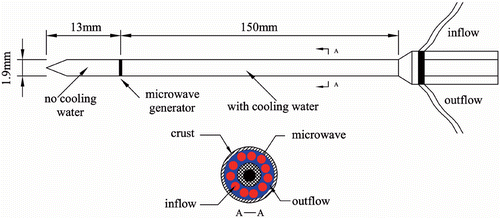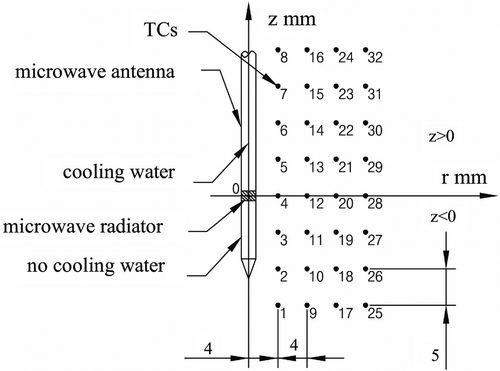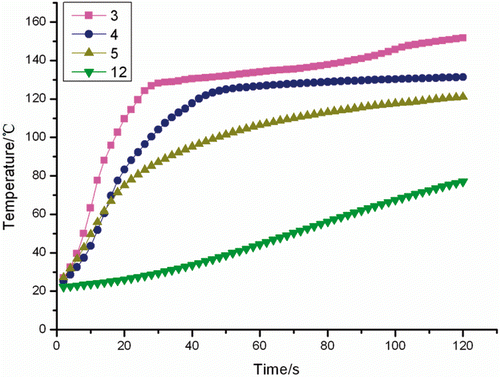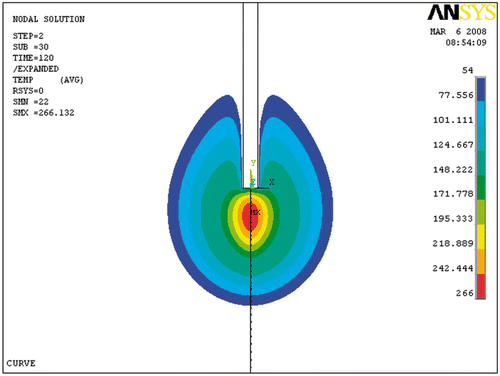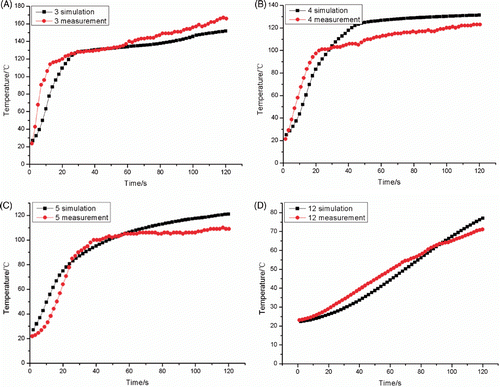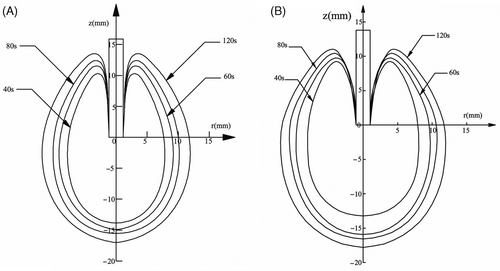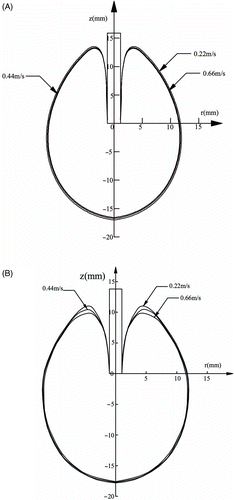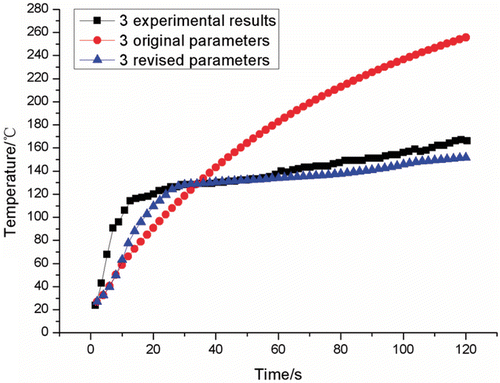Figures & data
Table I. Fitted coefficients of Equation 2.
Figure 3. Geometric modeling. A coaxial slot antenna was inserted in the phantom along the z-axis. The radius of the antenna was 0.95 mm. The dimension was directly labeled and every boundary condition was named as L1 ∼ L5.
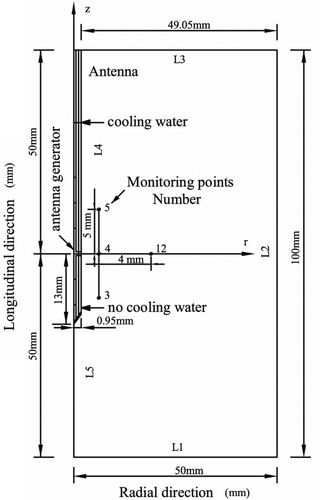
Table II. Nu and h of the different velocities.
Table III. Phantom ingredients (%).
Table IV. Physical parameters of the phantom.
Table V. R-sq between simulation and experiment.
Table VI. Comparison of the coagulation region.
